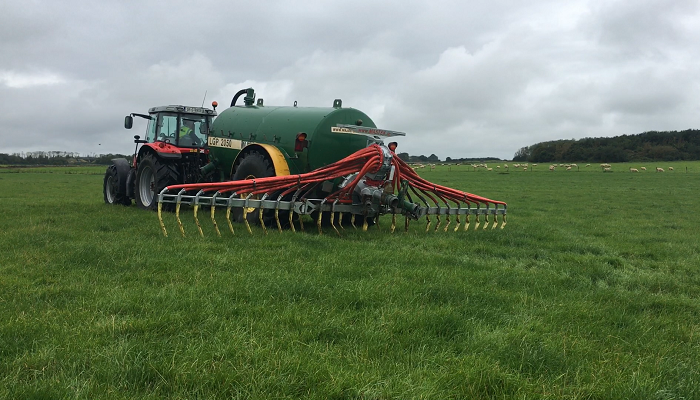01 May 2025
LESS slurry spreading delivers air quality improvements

More farmers using Low Emission Slurry Spreading (LESS) technologies and a reduction in the volume of nitrogen fertilisers used in 2023 delivered improvements for Ireland’s air quality, a new report has shown.
As presented in the Environmental Protection Agency’s (EPA’s) Ireland’s Air Pollutant Emissions Report (1990-2023), published today, May 1, Ireland was compliant with EU Emissions Reduction targets across all five major pollutants, namely ammonia, non-methane volatile organic compounds, sulphur dioxide, nitrogen oxides and fine particulate matter. These pollutants can impact air quality, health and the environment.
Ammonia is particularly important from an Irish agricultural perspective, as the sector is responsible for over 99% of Irish ammonia emissions and has previously been in non-compliance with EU targets. However, according to the EPA, Ireland’s ammonia emissions decreased by 4% in 2023 due to increased use of low emission slurry spreading on farms and a reduction in nitrogen fertiliser use. This brings Ireland into compliance with the EU target for ammonia.
“The EPA assessment shows that Ireland is on track to meet its 2030 EU Emissions Reductions targets for all five major pollutants which has multiple benefits for air quality, human health and valuable ecosystems,” Director of the EPA’s Office of Evidence and Assessment, Dr. Eimear Cotter said on the publication of the report.
“It shows that implementation of policies and measures delivers results in terms of reducing air pollutants. In particular, there is a welcome reduction in ammonia emissions in 2023, reflecting the impact and benefits of the on-farm adoption of a range of good farming practices driven and supported by national policies.”
Quantifying the impact of the use of LESS, Dr. Cotter noted that it avoided the release of 7,000 tonnes of ammonia to the atmosphere. In addition, reduced fertiliser use contributed to reductions in ammonia emissions. However, she noted that acceleration and widespread implementation of such practices is needed to keep Ireland on the pathway to better air quality and ongoing compliance with EU 2030 targets.
Away from agriculture, the EPA also reports that the ongoing move away from fossil fuel use in power generation and residential heating has been key in driving down emissions in three of the five key air pollutants: sulphur dioxide, nitrogen oxides and fine particulate matter.
